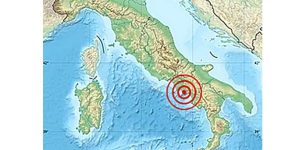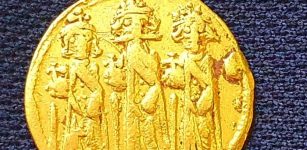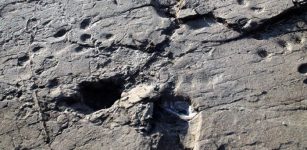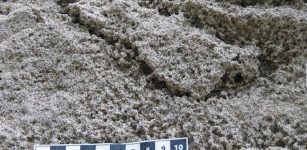Underwater Archaeologists Retrieve Over 100 Magnificent Glass Objects at Chengene Skele Bay, Bulgaria
Jan Bartek - AncientPages.com - The underwater archaeological survey conducted in June 2024 at Chengene Skele Bay, near Burgas, Bulgaria, has yielded significant findings. The expedition, led by Prof. Dr. Ivan Hristov from the National History Museum and organized by the Regional Historical Museum in Burgas, uncovered 112 glass objects across five distinct areas within the bay.
Credit: RHM Burgas
This discovery is particularly noteworthy as it adds to an already substantial collection of 310 previously described and published glass vessels from the area. The new finds have helped identify the highest concentration of glass artifacts in the region to date.
Evidence suggests that these glass vessels likely originated from a cargo spill caused by a ship encountering rough seas. This hypothesis is supported by the discovery of iron anchor chains and highly fragmented ceramic vessels from the Late Middle Ages and Renaissance period in the vicinity. However, the exact location of the shipwreck remains undetermined.
Credit: RHM Burgas
Credit: RHM Burgas
The ongoing research aims to provide valuable insights into glass consumption, trade, and production in the Balkans during the Late Ottoman period.
Scientists think the production of the vessels occurred in a workshop on the island of Murano, Venice, during the latter half of the 16th century or the beginning of the 17th century. However, the precise dating of the glass objects and the potential shipwreck remains to be determined.
Glass fragments were found in a 37-acre area at depths of 6. 6-8. 2 feet in 2020-2021. The stony seabed suggests possible cargo dispersal from a vessel in shallow, rocky waters. West of this, in a 1, 076 sq ft zone at 4. 9-16. 4 feet depth, Hellenistic pottery fragments, a Roman-era lead rod, and a stone fishing weight were discovered. East of Cape Chiroza, a 4, 305 sq ft area with poor visibility revealed a sand deposit, Hellenistic building pottery fragments, and stone war cores. Near Chengene Pier, late antique and medieval amphora fragments were found, including 12th-13th century Gunsenin type III amphorae components.
Credit: RHM Burgas
The underwater surveys conducted near St. Anastasia Island, specifically in the area known as the monastery port, have also yielded significant archaeological findings. These discoveries include fragments of ceramic vessels dating from the 18th to 19th centuries, parts of late antique amphorae, and an iron horn from an anchor. These artifacts corroborate historical records indicating substantial maritime activities in the region.
See also: More Archaeology News
The summer 2024 underwater investigations have provided valuable new data, enhancing our understanding of Chengene Skele Bay's history. The southeastern section of the bay has been identified as a particularly promising location for future underwater excavations.
Following conservation efforts by experts, the newly discovered artifacts will be displayed at the Archaeological Museum of Burgas. This exhibition will offer the public an opportunity to view these important historical items and gain insights into the area's rich maritime heritage.
Written by Jan Bartek - AncientPages.com Staff Writer
























